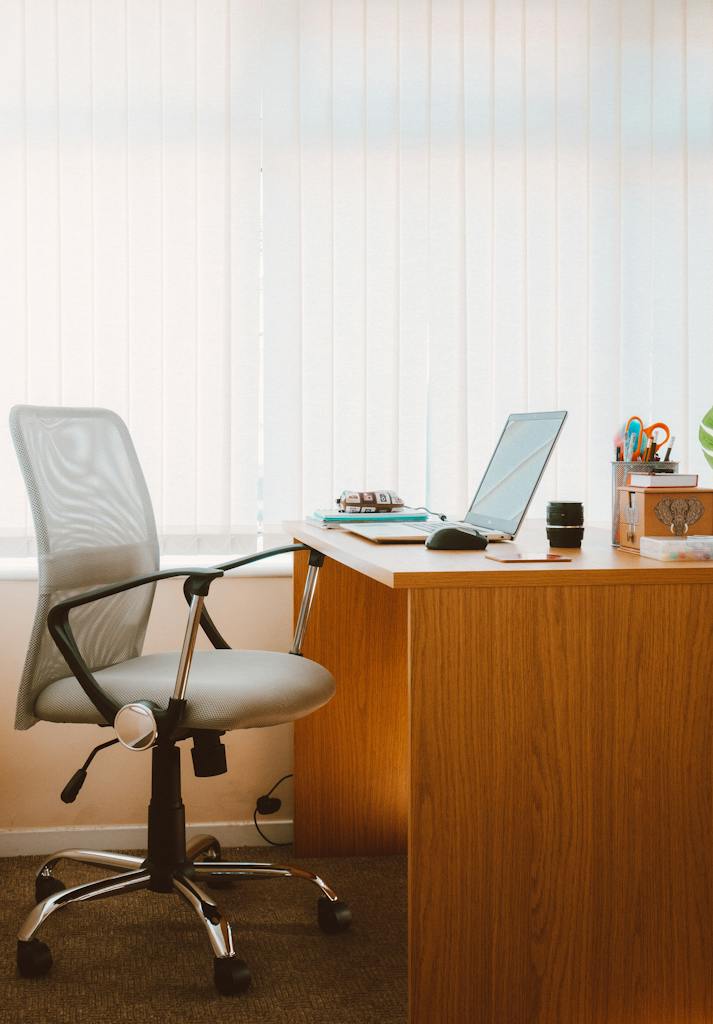Setting Up A Home Office For Freelancing
Are you considering freelancing and working from home?
Setting up a home office is the key to creating a productive and efficient workspace. By dedicating a designated area in your house for work, you can establish a professional environment that will enhance your focus and productivity.
We will guide you through the process of setting up a home office for freelancing. From choosing the right location to selecting ergonomic furniture and equipment, we will provide you with practical tips to create a comfortable workspace.
We will discuss the importance of organizing your office supplies and files, as well as creating a distraction-free environment. We will also delve into the significance of setting up a reliable internet connection for seamless communication.
We will explore the crucial aspect of establishing a daily routine and work-life balance to ensure success in your freelancing career. Get ready to transform your home into a professional and productive workspace!
Choosing the Right Location for Your Home Office
When it comes to freelancing, finding the perfect spot for your home office can make all the difference in creating a productive and inspiring work environment. So, where should you set up your home office?
The first thing to consider is the location. You want to choose a space that is separate from the rest of your living area, if possible. This will help minimize distractions and allow you to focus on your work. Look for a room or corner in your home that is quiet and away from high-traffic areas.
You also want to make sure you have enough natural light in your office. Natural light not only improves your mood and productivity, but it also reduces eye strain. If you can, choose a space with a window or close to one.
Think about the layout of the room. Make sure you have enough space for your desk, chair, and any other necessary equipment. You should also consider the ergonomics of your workspace to ensure proper posture and comfort.
Remember, finding the right location for your home office is the first step towards setting up a successful freelancing career.
Designing an Ergonomic Workspace
To create an ergonomic workspace, it’s crucial to prioritize the design and arrangement of furniture and equipment.
Start by choosing a comfortable chair that provides proper support for your back and promotes good posture. Look for one with adjustable features, such as height and armrests, to ensure a customized fit. Position your chair so that your feet are flat on the floor and your knees are at a 90-degree angle.
Next, set up your desk at a height that allows your arms to rest comfortably on the surface, with your elbows at a 90-degree angle. Consider using a keyboard tray or adjustable keyboard stand to maintain a neutral wrist position while typing. Place your monitor at eye level to avoid straining your neck and use a monitor stand if necessary.
Organize your workspace to keep frequently used items within easy reach. This will prevent unnecessary stretching or reaching that can lead to muscle strain. Use cable management solutions to keep cords and cables tidy and prevent tripping hazards.
Lastly, incorporate ergonomic accessories like a wrist rest for your keyboard and mouse, as well as a document holder to reduce strain on your neck and eyes. Remember to take regular breaks to stretch and move around to avoid prolonged sitting.
By following these ergonomic principles, you can create a workspace that promotes comfort, productivity, and overall well-being.
Selecting the Right Furniture and Equipment
Optimize your workspace by carefully choosing furniture and equipment that will enhance your comfort and productivity.
When it comes to selecting the right furniture for your home office, prioritize comfort and functionality. Invest in an ergonomic chair that provides adequate support for your back and promotes good posture. Look for adjustable features such as height, armrests, and lumbar support to customize it to your needs.
Ensure your desk is spacious enough to accommodate your work essentials, such as your computer, keyboard, and paperwork.
When it comes to equipment, your computer is the heart of your freelancing business. Choose a reliable and fast computer that can handle your workload efficiently. Consider investing in a dual monitor setup to increase your productivity by allowing you to work on multiple tasks simultaneously. A good quality keyboard and mouse are also essential to prevent strain on your hands and wrists.
In addition to furniture and equipment, don’t forget about lighting. Natural light is ideal, but if that’s not possible, opt for a desk lamp with adjustable brightness to reduce eye strain.
Remember, the right furniture and equipment are crucial for creating a comfortable and efficient workspace. Take the time to research and invest in items that’ll make your freelancing journey more enjoyable and productive.
Organizing Your Office Supplies and Files
One way to create a well-structured and efficient workspace is by organizing all of your office supplies and files. Keeping your supplies and files organized will not only save you time but also help you stay focused and productive. Here are a few tips to get you started.
First, designate specific storage areas for different types of supplies. Use bins or drawers to keep pens, pencils, paper clips, and other small items organized and easily accessible. Label each container so you know exactly where to find what you need.
Next, create a filing system for your documents. Use a filing cabinet or file folders to categorize and store important papers. Sort your files by topic or project, and label each folder accordingly. This will make it much easier to find specific documents when you need them.
Consider going digital with your files. Invest in a scanner and software that allows you to easily digitize and organize your documents. This will not only save physical space but also make it easier to search for and retrieve files.
Regularly declutter and purge unnecessary items. Take a few minutes every week to go through your supplies and files and get rid of anything you no longer need. This will help keep your workspace clean and clutter-free.
By organizing your office supplies and files, you’ll create a more efficient and productive home office environment.

Creating a Distraction-Free Environment
Eliminate distractions by creating a serene and focused workspace where you can fully immerse yourself in your tasks and unleash your productivity.
When setting up your home office, it’s crucial to create an environment that minimizes distractions and maximizes your ability to concentrate. First, choose a quiet area in your home where you can work without interruptions. This could be a spare room, a corner of your living room, or even a converted closet.
Once you’ve found the perfect spot, declutter it and remove any items that could divert your attention. Keep your desk clean and organized, with only the essentials within arm’s reach. Avoid having a television or other entertainment devices in your workspace, as they can easily pull you away from your work.
Instead, surround yourself with inspirational elements such as motivational quotes or plants to keep you focused and motivated. Consider implementing noise-cancelling headphones or a white noise machine to block out any external noises that may disrupt your concentration.
By creating a distraction-free environment, you’ll be able to fully concentrate on your freelancing tasks and achieve optimal productivity.
Setting Up a Reliable Internet Connection
Ensure you have a stable and dependable internet connection so you can seamlessly connect with clients, collaborate on projects, and stay productive. As a freelancer, your success relies heavily on your ability to stay connected online.
To set up a reliable internet connection in your home office, there are a few key steps you can take.
Choose a high-speed internet service provider that offers consistent and fast connectivity. Research different providers in your area and compare their plans to find one that meets your needs. Consider investing in a quality modem and router to ensure a strong signal throughout your workspace.
Next, position your router in a central location to maximize coverage. Avoid placing it near walls or other objects that may interfere with the signal. If you have a large home, you may need to invest in Wi-Fi extenders or additional access points to ensure a strong connection in all areas of your office.
Regularly update your router’s firmware to ensure optimal performance and security. Many routers have automatic update options, so take advantage of this feature to stay up to date. It’s also a good idea to secure your Wi-Fi network with a strong password to prevent unauthorized access.
By following these steps, you can set up a reliable internet connection in your home office, allowing you to work efficiently and effectively as a freelancer.
Establishing a Daily Routine and Work-Life Balance
Create a daily routine that prioritizes work-life balance to ensure a healthy and fulfilling freelance career. When working from home, it can be tempting to blur the lines between work and personal life. However, establishing a clear separation between the two is crucial for maintaining productivity and avoiding burnout.
Start by setting specific work hours and sticking to them as much as possible. This will help you stay focused during designated work times and allow for personal time outside of those hours.
Schedule regular breaks throughout the day to recharge and avoid prolonged periods of sitting. Incorporate activities that promote physical and mental well-being, such as exercise or meditation, into your routine.
Remember to also allocate time for personal interests and hobbies to maintain a sense of fulfillment outside of work.
Be sure to communicate your boundaries with clients and loved ones, so they understand and respect your work-life balance.
By establishing a daily routine that prioritizes work-life balance, you can create a sustainable freelance career that allows for both professional success and personal happiness.
Conclusion
So there you have it, setting up a home office for freelancing doesn’t have to be complicated.
By choosing the right location, designing an ergonomic workspace, selecting the right furniture and equipment, organizing your office supplies and files, creating a distraction-free environment, setting up a reliable internet connection, and establishing a daily routine and work-life balance, you can create a productive and comfortable workspace.
Remember, your home office should be a place where you can concentrate and thrive in your freelancing career.
Happy freelancing!



